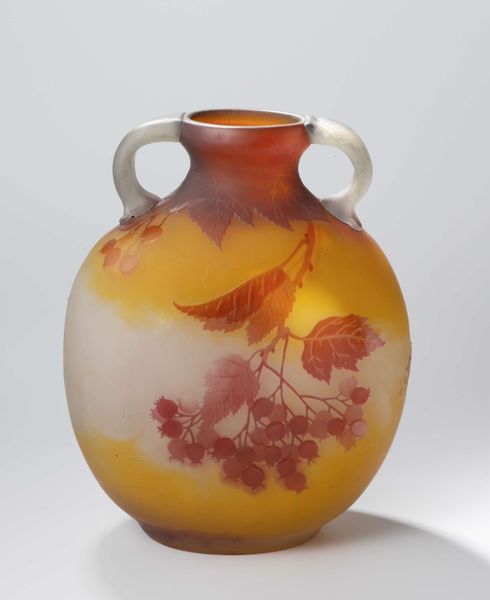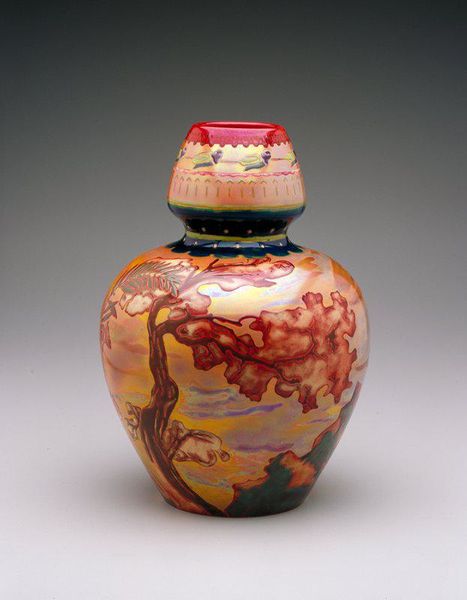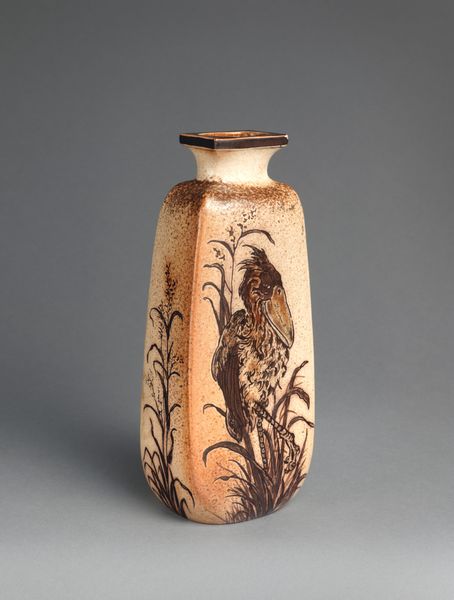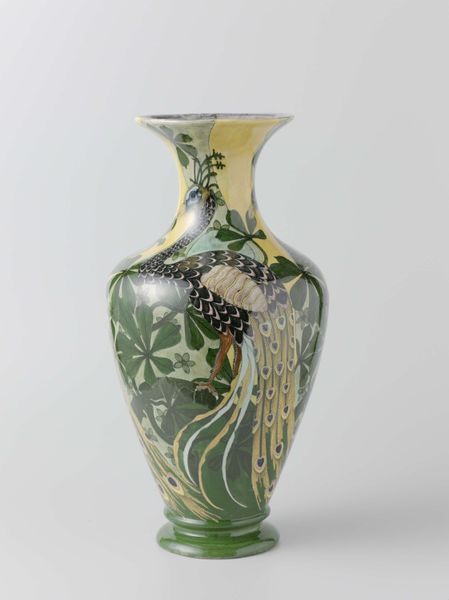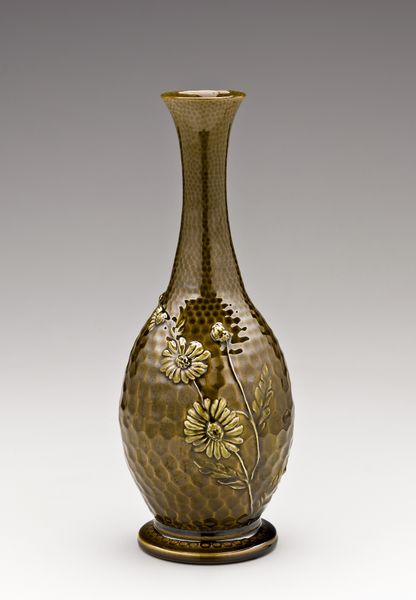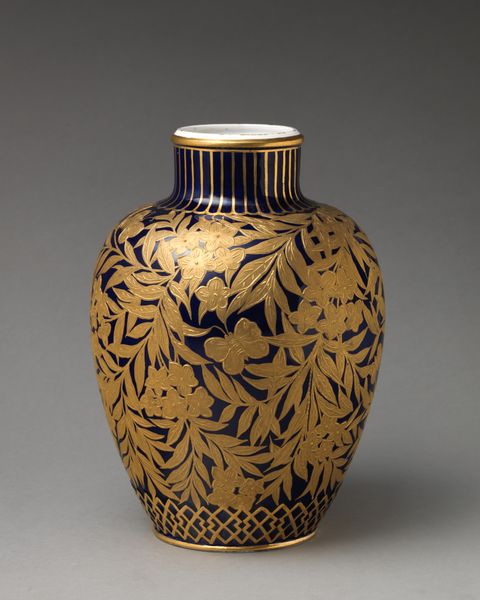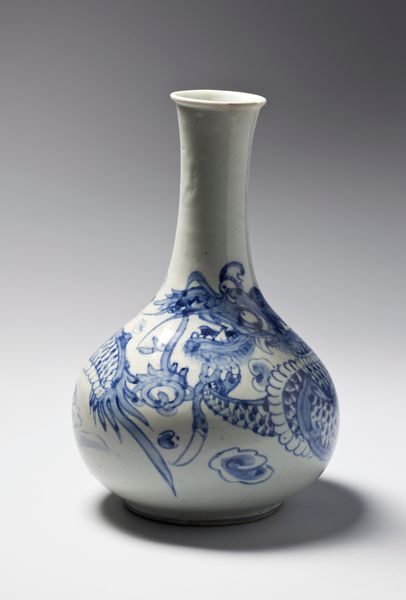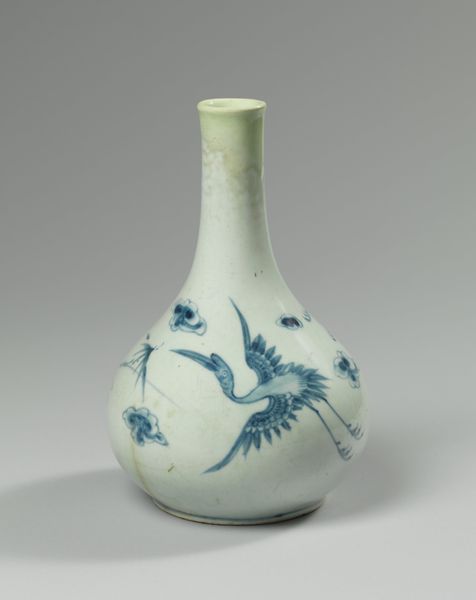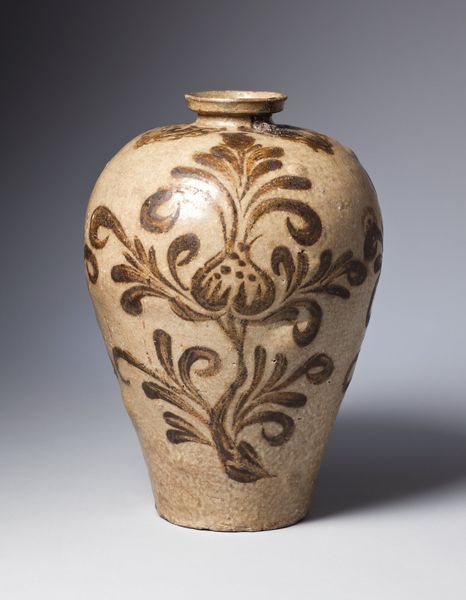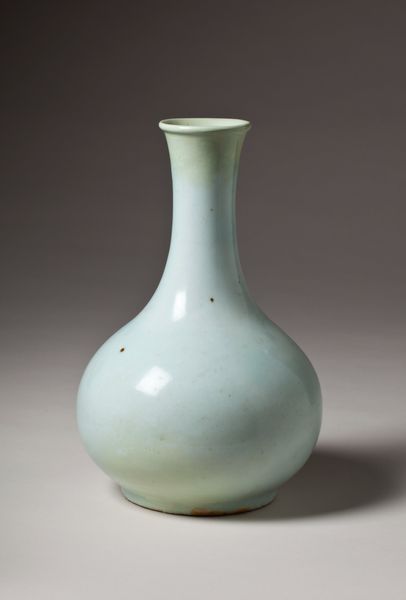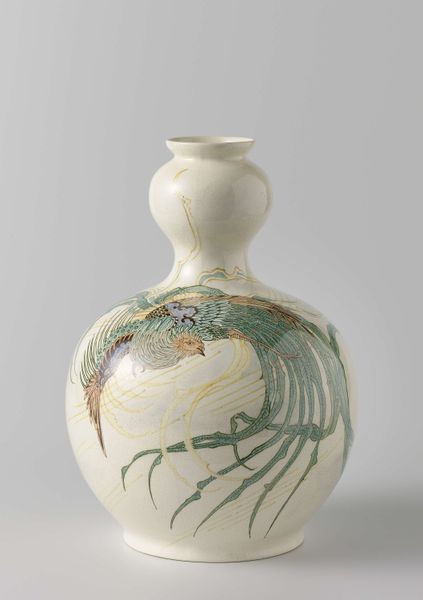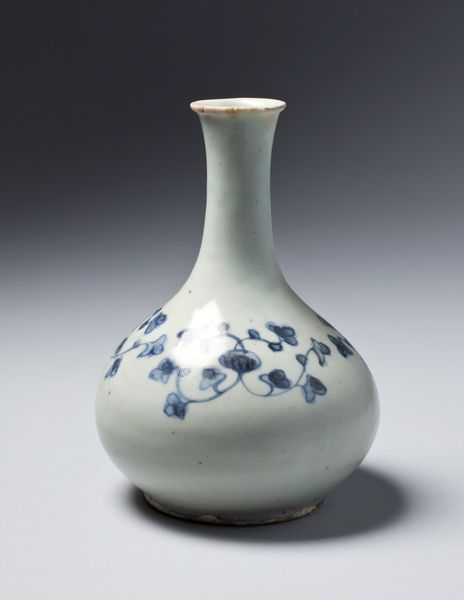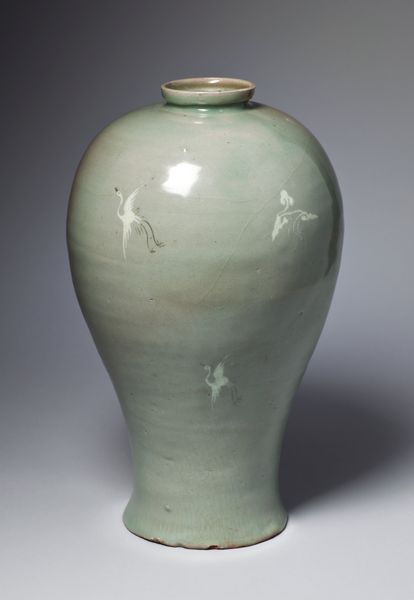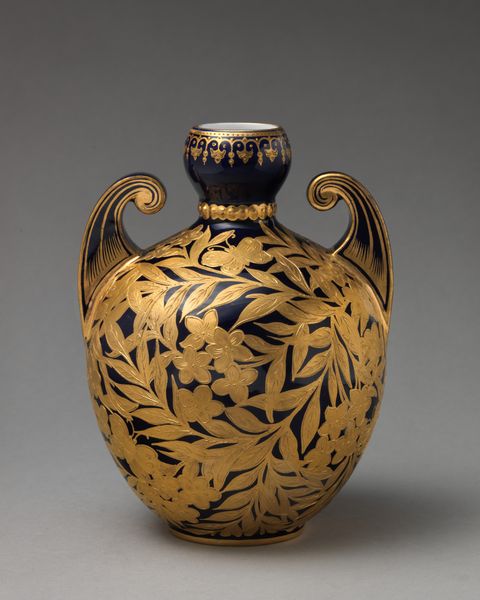
ceramic, glass
#
art-nouveau
#
ceramic
#
vase
#
glass
#
ceramic
#
decorative-art
Copyright: Public domain
Curator: I find myself immediately drawn to its graceful form; the piece practically embodies tranquility. Editor: We're looking at "Ovale Vase mit Phlox, Nancy, Frankreich," a glass vase crafted around 1900 by Émile Gallé, a key figure in the Art Nouveau movement. Curator: The etched phlox blooms crawl up a rounded glass form and emphasize its surface, no? Their dark silhouettes sharply contrast against the amber color, making it extremely elegant. It gives the impression the vessel is covered in jewels. Editor: Yes, Galle's approach involves layering glass and then acid-etching the surface to reveal these floral designs. During this period in France, the Art Nouveau style signified a reaction against industrialization, with many artisans returning to the detailed handcrafting and natural motifs that became hallmarks of the movement. Curator: Note how the contours guide our gaze and enhance a sense of harmonic continuity. One might almost disregard that it is functional. In theory. The curve of its top especially—such an opening would highlight long stemmed flora, would it not? Editor: Art Nouveau really flourished in this exact intersection of craft, design, and the marketing of luxury items to an emerging bourgeoisie. Galle's designs were incredibly popular, contributing to Nancy, France becoming an important center for glass production. The vase signifies more than decorative beauty; it represents new aspirations in European society around the turn of the century. Curator: Yet in doing so, shouldn't we ask whether its beauty depends on us admiring its complexity? That decorative commitment, although not excessive, still suggests it wants us to believe in the value of skillful design for its own sake. And indeed, I do find this glass beautiful because of its delicate interplay of textures and shapes. Editor: Precisely; the vase, beyond being a beautiful object, embodies a complex historical and societal context. The object itself manifests political aspirations through aesthetic expression. Curator: The discussion surrounding it provides another view onto history, highlighting questions of artistic value and interpretation, not only the time it depicts. Editor: Indeed. Reflecting on the intersection of form and context allows for an insightful experience.
Comments
No comments
Be the first to comment and join the conversation on the ultimate creative platform.
